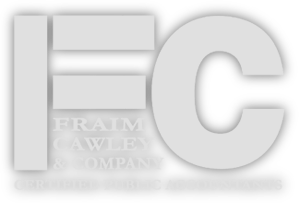Originally published August 20, 2013
“Debt is the slavery of the free.” – Publilius Syrus
I’m a firm believer that every business can benefit from a certain amount of debt. Borrowing fuels growth, can get you through lean months, and actually increases some measures of profitability
Too much of a good thing, of course, leads to trouble. So how much is too much?
There are several ways to find out if your business is “over leveraged”, including simple financial measures of your company performance, looking at cash flow, and consulting with a pro.
1. Do The Math
Let’s first look at 3 simple math formulas (financial ratios) that are helpful indicators:
- Debt to Asset Ratio = (Total Debt / Total Assets)
- The debt to asset ratio shows how much you have borrowed compared to how much you own. This ratio should be below 40% in most industries.
- Debt to Income Ratio = (Annual Debt Payments / Total Income)
- The debt to income ratio shows how much of your income is eaten up by debt repayments and this ratio should also be below 40%.
- Acid-Test Ratio = [(Current Assets – Inventory) / Current Liabilities]
- The acid-test ratio measures how easily you could pay off your current debts. Ideally this should be 1 or greater.
Again, the target values are general suggestions. Your industry changes what is considered normal or healthy, but these are all good baseline figures.
2. When You Have No Cash
Poor cash flow is another symptom of an over-leveraged company. If your income statement shows that you have reasonably high profits, but you never seem to have much cash on hand, then you may have too much debt. For instance, imagine your company had $200,000 in profit last year. That much money should eventually show up in your checking account, right? Not necessarily.
Paying off debt is not an “expense” – just a transfer between two accounts – so paying back principal on loans is not reflected in the $200,000 profit figure. Other things that decrease your available cash but do not reduce profit include paying income taxes, taking owner withdrawals, and investing in assets like cars or buildings (before depreciation). These factors can easily eat up any cash you might have generated from profits.
So what can be done to correct a bad cash flow? The answer varies based on your situation, but there are several areas to examine:
- Reduce non-critical staff (which can mean the owner takes on more of the work!) This is most helpful when sales cycles are long and the business is lagging behind competitors in its costs or pricing. Just be sure the cuts are not going to endanger customer relationships or cause other costs.
- Hire more salespeople and structure their compensation to be highly commission based. This works well when the business simply needs more revenue to pull itself out of a hole.
- Don’t reduce debt. Counter-intuitively, paying off debt might make the situation worse before it gets any better. Sometimes it is better to pay the debt more slowly and allow the cash flow time to recover. In the end, of course, getting the debt under control is the goal but if it is accelerated to the point that the company is illiquid and unable to continue operations, what is the point?
3. Get Advice
When too much debt is threatening your company there are four pieces of advice that will hold true in all situations.
- Do Not Ignore Taxes If you fall behind on tax payments, the IRS will find out, will probably assess penalties and interest, and may prosecute if they believe you committed fraud. Contact them, inform them of the situation, and attempt to set up a payment plan that fits your budget.
- Prioritize Loan Repayment. Start by repaying your highest interest loans. Try to use the capital raised from overhead reduction or revenue increases to pay off the debt to help ensure that there will not be a cash flow issue in the future.
- Examine Your Lifestyle. In many situations, getting the business back on track requires that you (the business owner!) live on less personally and leave more cash in the business. Is your business supporting you beyond your means? When you are the boss you have to take the good with the bad. Cut back in the short term to grow a larger, more sustainable business that will continue to support you in the long-term.
- Consult a Professional. Just do it. Every situation is different. A few hours of discussion with a local CFO or business minded CPA before a major decision or shift in corporate strategy could very well save your business. Being “frugal” (read: cheap) in this matter and trying to do everything yourself is seldom prudent. I have seen countless companies suffer from payroll penalties, mistakes in tax returns, and operational inefficiencies that could have paid for my fees many times over. Find someone with the right credentials for your company’s situation and hire them for a few hours a month on an ongoing basis.
Having too much debt can be a daunting problem. Focus on the light at the end of the tunnel. When the debt is paid off (or at least reduced to a reasonable level), the business will not suffer the constant struggle of cash flow and high interest expense. It will allow you to focus on actual management of the company and its growth – much more fun than just trying to reduce costs. A sustainable business can grow without the fear of one small mistake sinking the company. And when your business is on solid ground, life is good – at least some of that entrepreneurial stress will melt away!
So act now! Do not wait to act on something that will make your life better and your company more successful. Admitting there is a problem is the first step. Actually doing something about it is the second step that so few people actually take. Get the help you need to give you and your business a brighter future.
This article was originally published when I guest blogged for Fuse Financial Partners. As always, if you have any questions whatsoever or would like to talk please visit me online at FraimCPA.com or call me at (540) 314-0345.
IRS Circular 230 Notice: To ensure compliance with requirements imposed by the IRS, we inform you that any federal tax advice contained in this communication (including any attachments) is not intended or written to be used, and cannot be used, for the purpose of avoiding penalties under the Internal Revenue Code.




